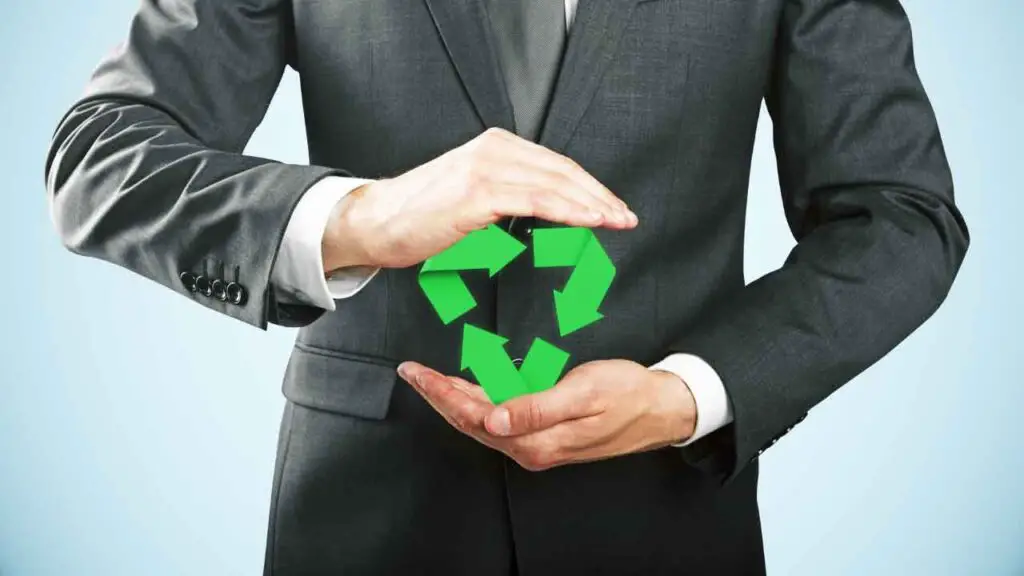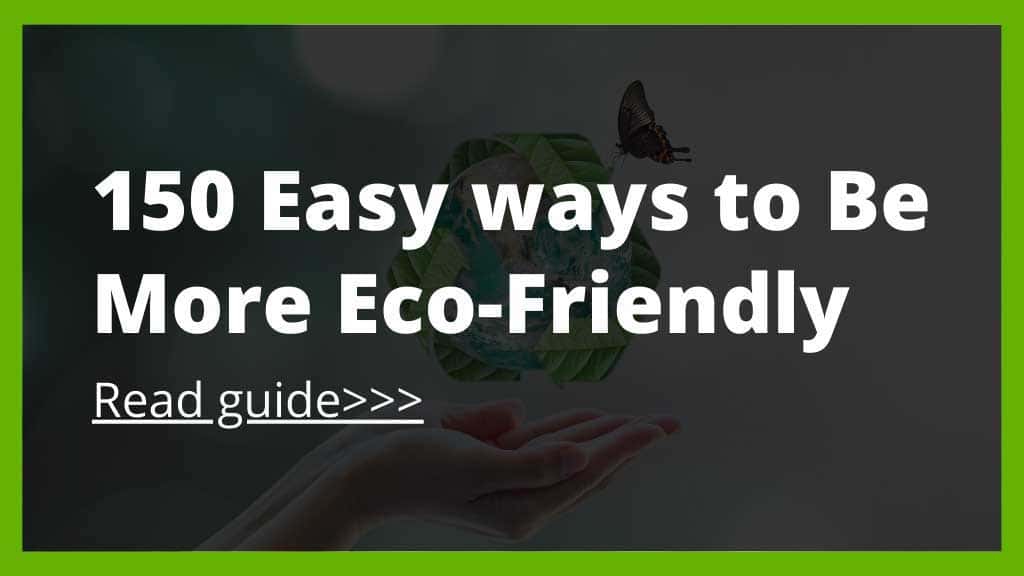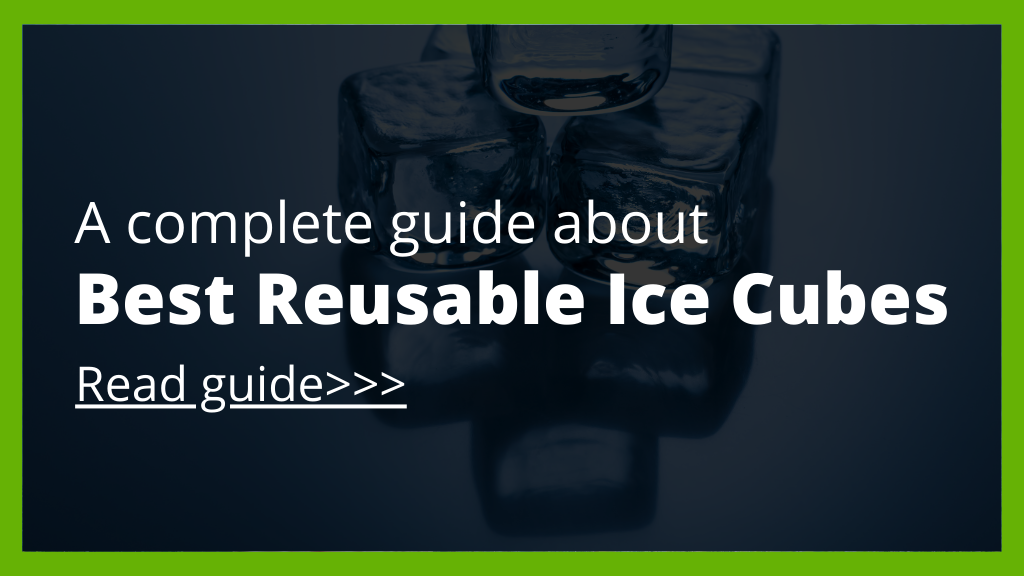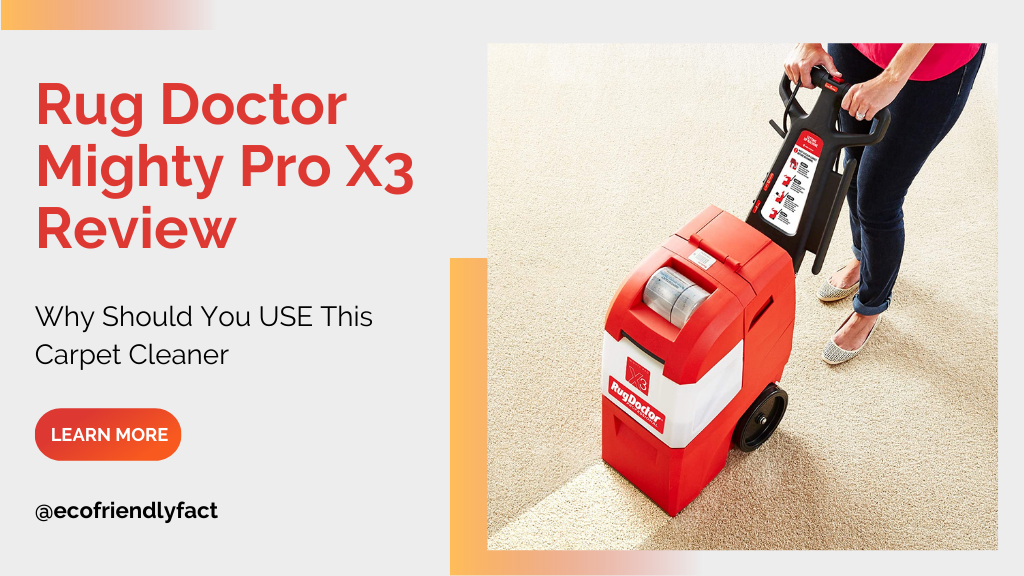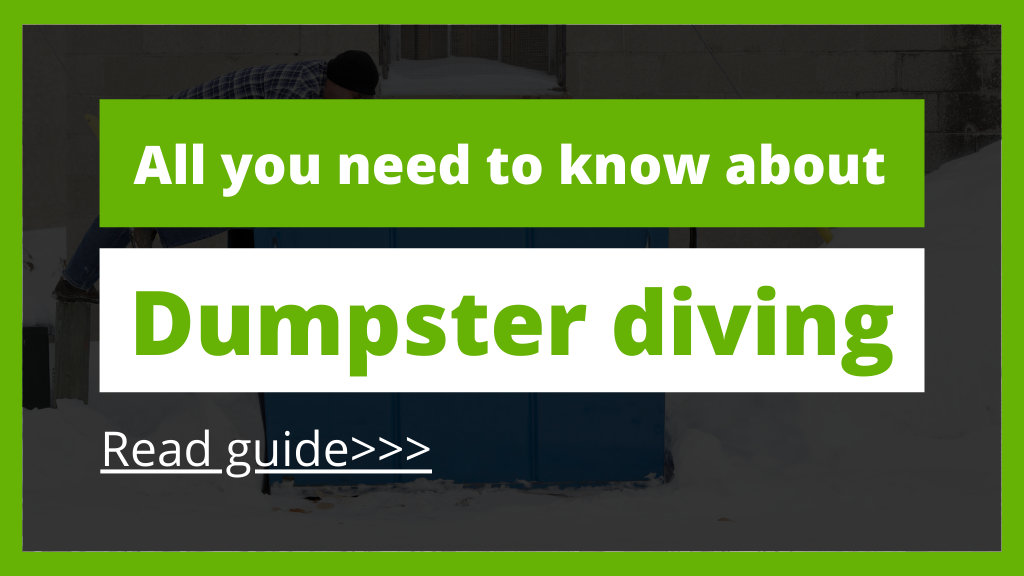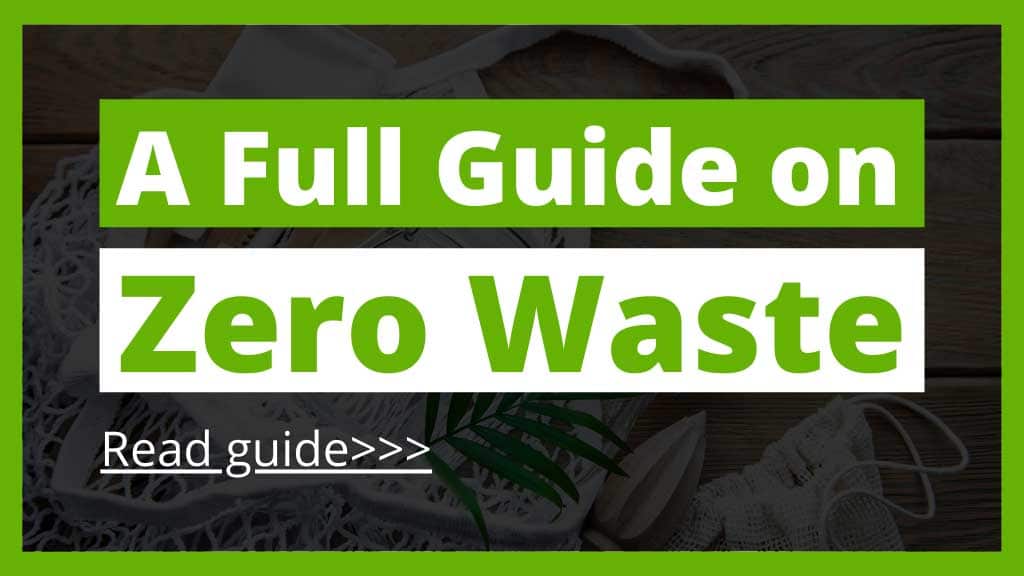How to be More Eco-Friendly: An In-depth Discussion with Tips and Best Practices
Learning how to be more eco-friendly is a growing trend that we’re all here for. Considering the limited resources we have on this planet, that’s all the more reason that we should do our best to switch to this lifestyle.
If you’re looking for details about this relatively new lifestyle, then you came to the right place. In this article, we will discuss everything you need to know about how to be more eco-friendly – its meaning, what sets it apart from other environment-friendly lifestyles, and how to determine if a product is truly eco-friendly.
We have also included 150 easy ways to be more eco-friendly. By incorporating these tips into your daily life, you’ll be on your way to saving and preserving the environment.
Eco-Friendly: Meaning
Simply, before learning about how to be More Eco-Friendly, it is more important to learn what does eco-friendly actually means. So, in actuality, eco-friendly simply means earth-friendly. This is a term that is most commonly used to refer to lifestyle, products, businesses, etc. in which efforts are being put to keep the planet greener, healthier, cleaner, and safer for everyone.
This term also refers to the practices that can help in conserving resources such as energy and water, contributing to green living, reducing land pollution and waste, etc.
Anyone can get engaged in eco-friendly habits by being more conscious about their life choices. However, if you want to learn more about what does eco-friendly means in-depth, simply go here.
Eco-Friendly Lifestyle
An eco-friendly lifestyle is all about living for the benefit you’re the environment and mother nature. To adopt an eco-friendly lifestyle, you have to make decisions based on the effects that they will cause on your environment.
Additionally, adopting an eco-friendly lifestyle can also help you to keep your planer cleaner, healthier, and safer for both humans and wildlife equally. Even though there are different types of a sustainable lifestyle. However, the basic objective of each is simply “Go Green”. The adoption of different means and things can make these types differ in their own ways.
However, the most important thing about adopting a green lifestyle is creating your own sustainable lifestyle by incorporating positive and green habits.
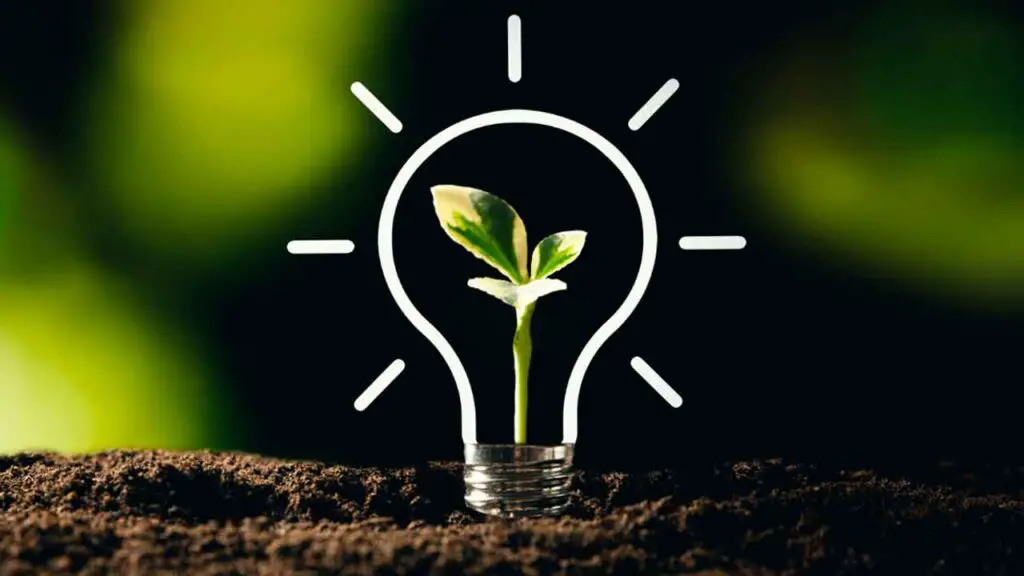
Why is it important to become Eco-friendly?
Do you want to know why it is important to become eco-friendly? Then, simply have a look at the most convincing reasons below to know more about the things in this regard.
So, here we go:
Healthier lifestyle
An eco-friendly lifestyle lets you use all-natural products and help you to keep away from chemicals and harmful objects. This will ultimately help you to ensure a more effective, and healthier lifestyle in the best possible way.
Reduced costs
Most importantly, becoming eco-friendly can help us to save more in the longer term. It is not only because an eco-friendly lifestyle can help you to conserve resources such as energy and water. And let you save more on energy bills. But also, because eco-friendly products usually tend to last for longer. So, you can easily reduce your living costs
Reduced pollution and waste
As the use of plastic has increased tremendously over time. Therefore, this has put our planet in danger. According to stats, in 2018, more than 90% of the plastic is going into waste and had never been recycled.
Plastic is not the only thing that’s leading to increased waste, but other items as well. However, becoming eco-friendly will help us to reduce the wastage of items. Additionally, it will also reduce land, water, and air pollution significantly. We can ensure a safer environment for our next generations effectively.
After knowing how becoming eco-friendly can benefit you in multiple ways. So now it has become imperative to learn some easy yet practical ways regarding how to be more eco-friendly here.
In Practice: 150 Easy Ways to be More Eco-Friendly
Aside from supporting eco-friendly brands, we can also be more kind to the environment by making simple changes to our lifestyle. To help you make the change, here are 150 easy ways to be more eco-friendly.
Start With Habit Formation
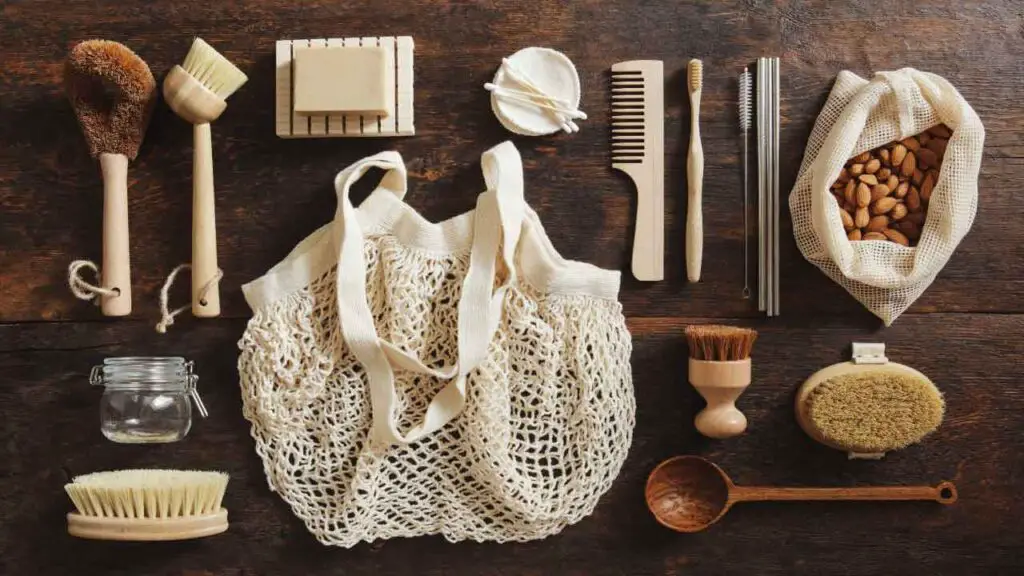
In compiling these 150 easy ways to be more eco-friendly, we decided to categorize them to make them easier to comprehend. And with this system, it will be easier to learn how to be more eco-friendly.
- Don’t litter around the streets. There’s a reason why trash bins are located everywhere – so we can dispose of our waste properly. If you just finished eating candy and there’s no trash bin around, keep it in your pocket first and throw it once you see one.
- Make it a habit to turn off the lights when you’re not using them. If you’re leaving a room, make sure to turn the lights off before you exit, so you’re not wasting energy unnecessarily.
- Similarly, switch off appliances that are not in use. We tend to forget that these appliances also use up a lot of electricity, and that can add up to power generation costs over time. By simply turning off and pulling the plug on your TV and other appliances when you’re done using them, you’re already making a big impact.
- Conserve water. Aside from our energy consumption, we should also be conscious of how much water we consume. The easiest way to do it is to develop the habit of turning off faucets when we’re not using them. You’d be surprised at the amount of water we save by turning it off while we brush our teeth.
- Limit your screen time. It also helps to limit your screen time. When YOU USE YOUR Gadgets often, you will need to charge it frequently – and that will use up energy. You may think that it’s not much, but if you consider all the gadgets you have at home, it will pile up. Besides, taking a break will also work wonders for your eyes.
- Change your lifestyle by doing activities that are not dependent on digital media. While social media can be addicting, it’s not ideal to spend hours on end on your phone or gadgets. You can try learning a musical instrument, read a book, and other similar hobbies.
- Take time to enjoy nature. Since we suggested limiting your screen time, you might be looking for new hobbies. Why not spend a few hours outside? The fresh air will surely do you good, and reconnecting with nature will surely drive you to protect the environment even more.
- Say no to plastic straws. You may think that one plastic straw won’t do much harm to the environment, but think of how many others around the globe are using plastic straws – and these plastic products will surely end up in the landfills. Instead, carry your reusable straw.
- Carry a reusable shopping bag with you everywhere. There are a lot of foldable tote bags in the market, and one could easily fit inside your bag. You don’t know when the urge to go shopping will hit. By the time you have to buy something, you have an eco-bag ready at all times.
- Challenge yourself to get more sleep every day. When you go to sleep, you’re using less electricity. But aside from this reason, getting enough sleep every day will also give you more energy throughout the day. Plus, you will surely reap a lot of health benefits, so it’s a winning change.
Watch What You Eat
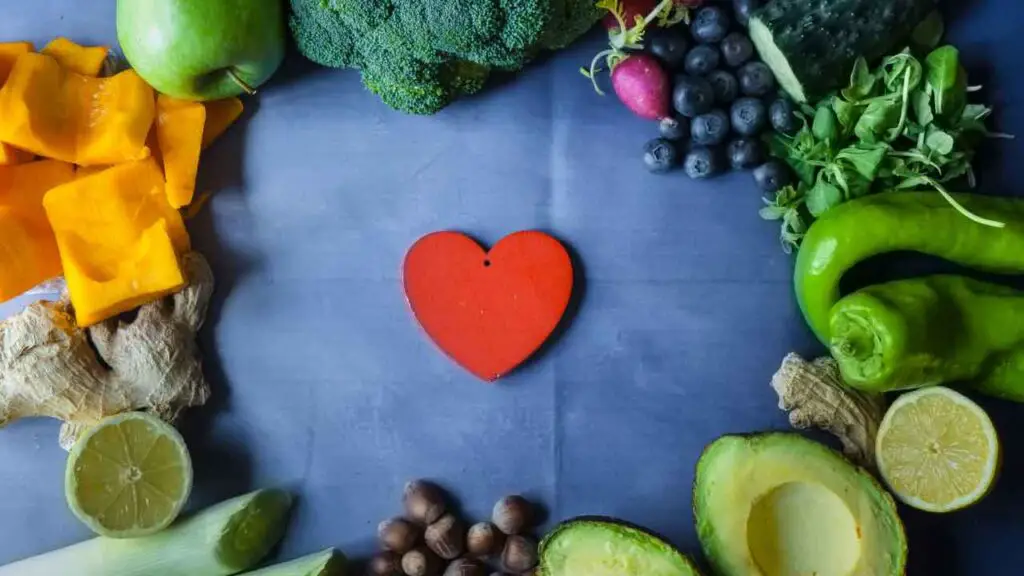
Surprisingly, watching what you eat will also teach you how to be more eco-friendly. In fact, it consists of 42 out of the 150 easy ways to be more eco-friendly. Let that sink in – it really makes you re-think what you prepare on the dinner table.
- Try to limit your meat intake. While we can’t deny the savory goodness of a flavorful steak, we have to watch how much of it we eat. Cow and pig farms produce large amounts of carbon dioxide every year, especially considering its growing demand. So if we could only limit our meat intake, Mother Nature will surely be grateful.
- But if you must, choose meat that is not produced from confined animal feeding operations or CAFOs. These meat product producers do not comply with health codes and similar guidelines, leading to cheap but unsafe meat.
- Buy meat from local sources. Also, it’s best to buy meat that is locally sourced. These meats are usually fresh and organic, so you know they’re great for your consumption, too. Besides, being locally sourced means that it consumed less gas and energy to get the product to the market.
- Shop at your local farmer’s market. Aside from meats, we recommend buying your food from the farmer’s market in your area. Not only will you be helping the local economy, but you’re also supporting them in making food more sustainable for your community.
- If you’re buying food for the family, choose to buy it in bulk. When you buy in bulk, you only go to the market once or twice a week – and that prevents you from burning fuel often.
- Grow your produce. Better yet, it’s better to grow your own fruits and vegetables in your garden. This way, you can be confident that no chemicals will be used from planting to harvesting. You can start small with herbs, and you can grow your produce garden from there.
- Before you go shop for food, make a list first. This will allow you to buy only what you need, and thereby reducing any form of food wastage.
- Only buy what you really need. It’s always tempting to buy items that are on sale, but if it’s not on your list, it’s best to turn your head away.
- Do not buy from and support sellers that offer endangered fish.
- When you buy in bulk, make sure to portion food properly and prepare them for storage as soon as possible. This will help keep them fresh and always ready to cook.
- Cut your cheese cravings. Some cheese variants are produced in environmentally damaging environments, which is why it’s frowned upon. Fortunately, not all cheese is produced this way. Cheese variety that can be considered eco-friendly includes feta, brie, and camembert.
- Organic dairy products. Make sure to buy your dairy products from farms that observe all-natural methods.
- Choose to go plant-based from time to time. There is a growing trend for plant-based food alternatives, and they taste almost like meat. They’re also rich in protein, so you’re still getting a balanced meal out of it.
- Buy local and in-season produce. Products sold locally are not shipped from far away, so you know that no fuel was consumed to reach your place. On the other hand, in-season produce grows effortlessly during a certain period, so you know that not many resources were wasted for its growth.
- Choose sustainable food. Food from sustainable sources are those that grow faster regardless of surrounding conditions. This makes them easily replaceable.
- Ask around if your community has a Community-Supported Agriculture Program. Under this program, you can support local farmers in growing their produce. In exchange, you will receive part of their weekly produce – and that’s a cost-effective way to help the local farmers while getting a healthy supply of seasonal food.
- Go organic. Organic produce is those that were grown without being sprayed with chemicals. That assures you that no harmful elements were released into the atmosphere during its production. This makes them the eco-friendly and healthier alternative.
- Learn how to store food properly to keep them from going bad faster. You can also use this method to make sure that the food lasts throughout the week.
- In the case of fruits and vegetables, pick the ones that are the ripest to cook first. This tip is especially useful if you love making smoothies for breakfast.
- As much as possible, eat your fruits and vegetables while they’re raw. Generally, organic produce can be eaten without the need for cooking. By eating them raw, you don’t have to spend time and waste energy just to prepare them.
- Learn how to preserve food. To keep food from going bad, you can opt to have them preserved for later enjoyment. Popular food preservation methods include pickling, salting, fermenting, and drying.
- Steer-clear of food containing antibiotics. Some farm produce is injected with antibiotics to treat infections and prevent their potential spread. Unfortunately, these antibiotics remain in their system, which we can then consume eventually. This results in a possible development of drug-resistant bacteria that can wreak havoc in the environment.
- Don’t throw out leftovers. Some leftovers can be properly stored, and you can reheat them for a quick meal for the next day.
- Similarly, list down what you have to throw out from the fridge. In this way, you can easily take them out without leaving the fridge door open for a long time.
- Eat less processed food. This type of food goes through a series of processes, and the equipment often uses high amounts of energy. Besides, processed food can be filled with preservatives, which is not good for your health, anyway.
- Cook your own food. Ideally, we should prepare our own food. By doing so, you get to pick the freshest ingredients, and you can also adjust the taste to your liking. This way, you know that you’re eating healthy while also doing your best to help the environment.
- Only cook what you need. While it’s tempting to cook everything you bought, such a practice can be excessive – especially if you’re the only one eating. Always plan what you have to eat, so you don’t end up cooking too much.
- If you’re following a recipe book, adjust the portioning to make sure that you’re only cooking for the right number of people. Most recipes make it clear how many people it can serve, so always check that out before you start cooking.
- Make the most out of every food item. Some people would throw away stalks, ends, and stems – even when they’re edible. Luckily, some cookbooks can give you an in-depth discussion on how to make the most of these pieces. And the more you make the most of your food, the less of them end up in the landfills.
- Make the most of your freezer. The freezer helps maintain the longevity of your food, so you can use it to store as much food as you can.
- But if you must eat out, choose restaurants that use and serve locally produced food. With the growing demand for eco-friendly dine-in options, more restaurants are opting to source their products locally. And that guarantees that you will never run out of options.
- Do not buy beverages that come in single-use containers. Soda, fruit juices, instant coffee, and similar beverages are now sold in plastic containers. As much as possible, we shouldn’t support these brands. Opt for those being sold in recyclable cartons or glass bottles instead.
- Some bars offer beer and other drinks straight from the tap. Most beers and liquors come in bottles or cans. While glass bottles can be recycled, not all cans can be. So instead of having them pile up in the dumpster, actively choose to go to a bar that serves your favorite beverages from the tap.
- Similarly, it’s best to bring your own coffee tumbler for coffee runs. Some coffee shops even give discounts to patrons who bring their own tumblers when they order.
- Drink more water. Not only is it better for the environment, but it’s also better for your body. But, make sure that you don’t buy ones in single-use plastic bottles.
- If you’re planning to buy takeaway, choose from a restaurant that’s using eco-friendly packaging for their takeaway items.
- Similarly, say no to plastic utensils. Since you’re eating it at home, it’s best to use your reusable kitchenware instead.
- But if you can, it’s best to avoid buying takeaway altogether. While some restaurants and cafes now embrace eco-friendly packaging, these still end up in the landfill once you’re done eating. Eating at the restaurant – and with their washable plates and silverware – will be the more environmental choice.
- Don’t throw away half-used produce. There will be times when you’ll only need half an onion or half a tomato, or any other fruit or vegetable. In this case, don’t throw them out. Instead, store them in an airtight container to help seal in the freshness.
- Buy food items that are wrapped in eco-friendly packaging. Or better yet, but items that are not wrapped in anything – which is especially true for fruits and vegetables. These food items do not need any additional wrappers, so don’t support sellers that wrap them individually.
- Don’t forget your pets. If you can, always choose to buy pet food in bulk. This saves you from throwing out small packets of packaging.
- Also, invest in a container to store your pet food supply to keep them from going bad. As much as possible, pick one that’s airtight, reusable, and can be easily washed. It also helps if it’s not made of plastic or any other material that contains harmful BPA.
General Changes to Your Home
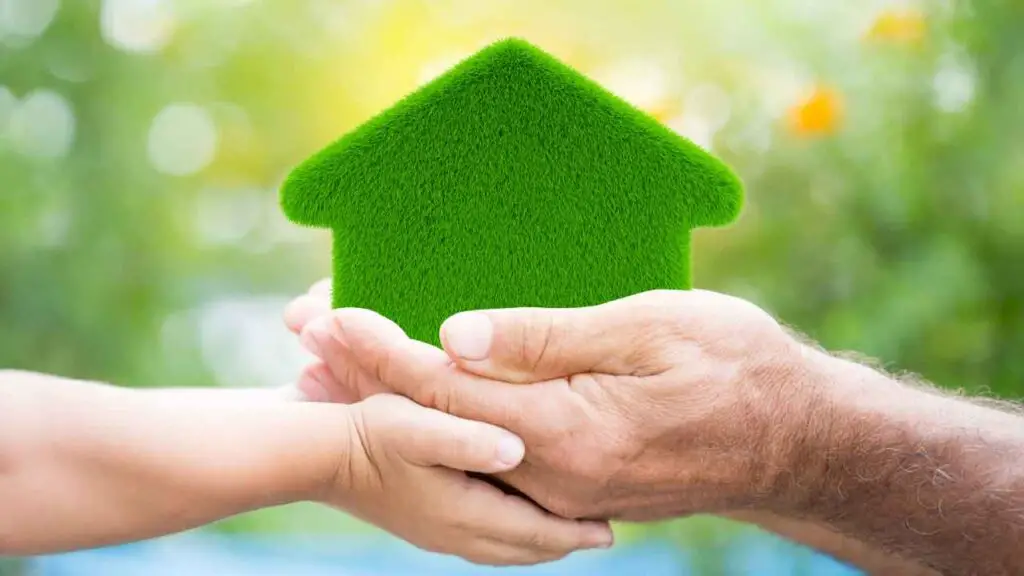
An important part of these 150 easy ways to be more eco-friendly is to help you embrace lifestyle changes within your home. We may have developed wasteful habits in the past, so these tips will redirect us back to the right path.
- Conduct a home energy audit. Before starting with any of these tips, it’s best to conduct a home energy audit first. This activity will help you identify what needs improvement and what needs to be addressed as soon as possible.
- Open your curtains and blinds in the daytime. By making the most of the sun’s natural illumination, you won’t need to turn on the lights in your home. This saves you a lot on your energy consumption, and your wallet will be grateful once the bill arrives.
- Only turn on the lights when necessary. Previously, we mentioned that you should make it a habit to turn off the lights when you’re no longer using them. Similarly, you should only turn on the lights when it’s necessary. While it’s tempting to have the main light turned on plus some lamps on the side, this can be quite excessive.
- Speaking of lights, we strongly recommend switching to LED bulbs. Today’s LED bulbs are engineered to produce lights as bright as traditional bulbs but with consuming less energy. That, undoubtedly, makes them the eco-friendly option.
- Install insulation. Most modern homes are built with eco-friendly and energy-efficient features. but if you’re on a budget, installing insulation will give you almost the same effect. Also, insulation helps keep your house cool during the summer, so you don’t have to turn the AC on often.
- Turn on the heat only when necessary. Once the temperature drops around us, it’s always tempting to turn on the heater. But if we can keep ourselves warm by wearing more layers, then we should opt for that first. Only switch it on when the cold starts to feel uncomfortable.
- On hot days, open your windows to let the fresh air in and let the heat escape. The improved airflow will also be better on your skin and lungs, compared to the dry air you’ll get from turning on the AC.
- Install solar panels and batteries. Solar panels help you collect the sun’s energy and convert it into usable power. This usable power is stored in a battery, which you can then use to power up your home.
But we have to admit, installing solar panels for your home can be quite expensive. You can opt to start small and eventually build up your solar panel farm. You can start by using it to light up your home.
- Alternatively, ask around if your area has a Community Solar Farm. This will save you the cost of installing panels on your own, while also saving on energy costs in the long run. Also, this will give you peace of mind, knowing that your home is powered using sustainable energy.
- Schedule a cleaning day when you can wash your clothes in bulk. When you wash clothes in bulk, you’re using the washing machine to its full capacity. This is better than running a machine with very few clothes in it. If you don’t want to wash clothes once a week, at least wash only when it reaches the machine’s washing capacity.
- Wash clothes in cold water. This is a cleaner’s secret that should be known to everyone: stains can be better removed with cold water. If you use warm water for cleaning clothes, it may not always get rid of stains. As a result, you would have to wash it again – which can be a waste of water, energy, and cleaning products.
- Make the most of mother nature and avoid using the dryer. While the dryer helps get the laundry done in hours, it can also be quite wasteful. Instead, hang your clothes outside and allow them to air-dry naturally.
- When buying new appliances, choose ones that are energy efficient. Most of today’s appliances now come with a label that gives you an idea of how much energy it consumes. Pick the most efficient one, considering the size of your home vis-à-vis the capacity of the product.
- Practice minimalism. By practicing minimalism, you’re only using what you need in life. As a result, you only buy limited items. And when you don’t own a lot, you don’t have to throw away a lot. There is plenty of literature about minimalism that will help you embrace this lifestyle without feeling deprived.
- Embrace proper waste disposal. As much as possible, do your research about the best practices when it comes to proper waste disposal. This will allow you to maximize what you can recycle, so you only dispose of limited items.
- Replace your old trash bags with certified compostable trash bags.
- Teach your kids about proper waste disposal and an eco-friendly lifestyle. We can all agree that it’s best to start them young. The earlier you get them involved in the waste disposal and similar practices, the more it becomes part of their lifestyle. Soon enough, you’ll watch them grow into environmentally conscious individuals.
- Unsubscribe from traditional mailing lists. In the old days, you can subscribe to magazines and similar mailing lists and receive them on your doorstep once or twice a month. However, most of the content found on these reading materials is now available online. So instead of having them pile up in your home, unsubscribe from their traditional mailing lists and switch to their digital alternatives.
- Similarly, go paperless with your bills. Most companies now offer the option to send your monthly bills electronically via email. This allows you to easily keep them in your file while also reducing the use of paper. Also, you receive these emails faster than those delivered via mail, so you can settle your balance as soon as possible.
- Pay your dues electronically. Thanks to technological innovations, we can now perform much of our duties digitally. Part of these duties involves paying the bills. Most of today’s service and utility providers offer digital payment platforms, which is a greener way to settle your balance.
- If you’re looking into buying a house or renting an apartment, pick one that’s just the right size for your family. While we love showing off a large home, the maintenance costs of such a home can surely drill a hole in your pocket. Additionally, you would need more lights and appliances to fill the space, and that’s wasteful and hurtful to the environment.
- Only print out the documents that you really need. Keep in mind that trees are cut to make paper – so you only want to use as little of it as possible. When it comes to important documents, only print out what you need. You can save a digital copy instead of printing out another one.
- Fix leaky faucets and pipes as soon as possible. You may think that a leak is no big deal, but if you consider the amount of water that you’re wasting in a year the number is quite significant. That is why we recommend getting it repaired as soon as possible.
- Donate what you don’t need instead of throwing them away. When we no longer need something, the tendency is to throw them out. But, someone else might need it, so it’s best to give it to them instead. If you don’t know anyone who needs what you have, you can also donate them to charity and similar organizations. By doing so, you’re giving your stuff a second chance to be used instead of getting thrown out.
- Convert your old clothes into rugs or mats. Instead of buying new mats or rugs, you can just make one using your old clothes. The internet is filled with recycling ideas and projects that will teach you how to create these pieces. Through this simple project, you won’t be throwing away any of your old clothes.
- Recycle old sweaters and sweatshirts into a warm blanket. Sweaters are known for their thicker quality, and that’s what makes them great as blankets. You can do so by simply sewing them together to form a blanket. It’s not a lot of work, making it an achievable eco-friendly project.
- Use old wooden pallets as chairs or as a coffee table instead of buying new furniture. This is one of the easiest upcycling projects that you can introduce to your home. They especially look great in the garden or patio, so you don’t have to spend money on furniture.
Changes in Your Kitchen
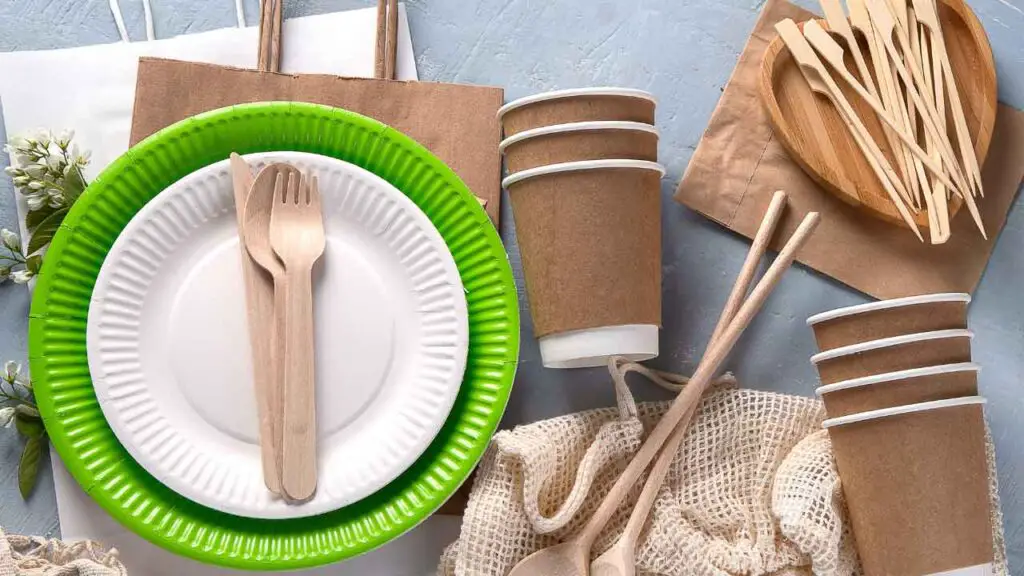
We have also dedicated a portion of these 150 easy ways to be more eco-friendly to encourage changes in the kitchen.
- Invest in a water filter. Water treatment facilities use up a lot of energy and also tend to emit harmful substances into the air. So as much as possible, invest in a water filter for your kitchen to make the water safe for drinking. It also reduces the need to buy bottled water often.
- Use reusable kitchenware. Avoid using paper plates and other single-use items. While washing the dishes is no one’s favorite chore, it’s still better than dumping disposable utensils in the trash. The little sacrifice you make will help save the environment in a big way.
- In the case of paper towels, always go for the eco-friendly or recycled kind.
- Better yet, steer clear of paper towels completely. Instead, replace them with reusable and washable cloth towels. Choose one that’s made of natural cotton with no chemicals and eay to clean.
- Similarly, go for cloth napkins instead of table napkins made of paper.
- For the coffee lovers out there, it’s best to replace your paper filters with reusable ones.
- Similarly, if you love brewing with K-cups, opt for reusable ones. Because of the popularity of single-serve pod-based coffee makers, the production of k-cups or coffee pods has increased. Unfortunately, we also saw the rise of these pods in our waste bins.
Fortunately, companies have created a universal reusable pod that can easily fit these machines. With this pod, you can brew your favorite coffee blends, allowing you to adjust them to your specific taste. This item can surely make coffee-drinking more pleasurable.
- If you prefer tea, we also recommend buying a tea infuser instead. With this contraption, you can brew loose tea leaves that you can re-brew anytime. This also gets rid of the need for buying tea bags that get thrown out often.
- Establish a composting section in your kitchen. You collect a lot of food waste in your kitchen while you prepare your meals. While there’s nothing wrong with separating the edible parts from the non-edible ones, it’s best to segregate the compostable ones from the others.
- Don’t pack snacks in disposable plastic bags. There are alternatives made of silicone material that can also be sealed. This alternative gets rid of your need for plastic ones, and the fact that they’re easy to clean is a bonus.
- Similarly, pack your family’s lunch in lunch boxes. For kids, a lot of these containers come with fun cartoon designs to make them look forward to lunchtime. And for adults, there are minimalist boxes that won’t make them feel like a child in front of their colleagues. But as you look for a lunch box, make sure to go for ones made of BPA-free and sustainable material.
- Use old glass bottles and jars as a container for spices. Clear glass bottles make excellent spice holders since you can easily tell what’s inside. So instead of throwing out old ones, you can upcycle them for this purpose. This also saves you the money from having to buy new containers.
- Check your fridge door regularly. The fridge is one of the highest consumers of electricity in your kitchen. And to make sure that none of the energy goes to waste, it’s best to make sure that the doors are always sealed correctly.
To test this out, open your fridge and put a paper bill between the fridge door. If you can pull it out easily, then you need to have the seal replaced or repaired. If not, then you know that your fridge isn’t wasting any energy. But, we recommend performing this check at least twice a year just to make sure.
- If you’re in the market for a new kitchen appliance, always check for its energy efficiency. Most kitchen appliance manufacturers are now aware of how much energy their products produce, so they’re trying to engineer it to use less energy as possible. Also, some appliances seem to be more efficient than others, so do your research first before you shop.
Changes in Your Bathroom
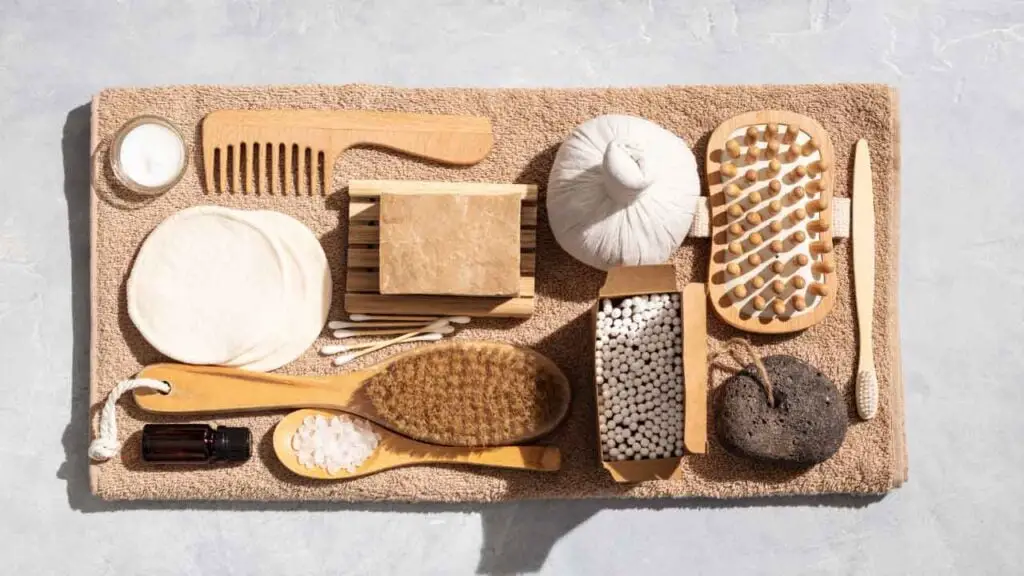
Making changes in your bathroom can also teach you how to be more eco-friendly. Whether it’s shifting to water-saving features or consciously choosing showers over baths, each tip will surely help you with your goals.
- Take shorter showers. Usually, the longer it takes for you to shower, the more water you end up consuming. That’s why we recommend that you try to take shorter showers – and encourage your family to do the same.
- Invest in a showerhead that offers a low-flow system. Sometimes, replacing your showerhead makes all the difference. A showerhead with a low-flow system will keep you from wasting too much water during your showers. It also helps spread the water more evenly, so you don’t have to stay there long enough to rinse yourself off.
- As much as possible, use the shower instead of filling up the bathtub. You may not realize it, but filling the tub with water uses so much more water than what’s needed to bathe yourself. By taking a shower, you’re only using the right amount of water to get yourself cleaned.
- Don’t turn on the heater when it’s not necessary. While taking a bath with warm water is relaxing, it’s not a green way to live. When your heater turns on, it uses significant amounts of energy – and we know how badly that can impact the environment. Thus, we recommend turning it on only when you need it – like during the colder months.
- Try to save leftover bathwater with a bucket or basin, then use it for flushing the toilet.
- Replace your personal care products with sustainable ones. For example, a toothbrush is often made with a plastic handle and nylon bristles. Since we know how unsustainable plastic can be, you might want to switch to greener options. You can start by simply choosing a toothbrush made of wood – bamboo is a popular choice.
- For those who wear makeup, we recommend switching to reusable cloth pads instead of disposable cotton ones. Also, try to switch to Q-tips with wooden handles instead of those made of plastic.
- Turn off the water when you’re brushing your teeth. We’re probably most guilty of this habit – brushing our teeth while the water is running. Instead, only turn it on when we need the water, and turn it off when we’re done. By doing so, we’ll be saving a great deal of water in the long run.
- Use eco-friendly toilet paper. Multiple brands now sell recycled toilet paper, which is better than ones made of freshly cut trees. Also, most of today’s white toilet paper is bleached with chemicals – and you don’t want that anywhere near your privates at all. Thus, we strongly recommend going for the unbleached and recycled kind.
- Switch to shampoo bars. Recently, shampoo bars are all the rage. These shampoo bars are often sold with paper packaging, thereby getting rid of the need for plastic bottles. And the more we accept shampoo bars as the norm, perhaps companies will also shift to this form of packaging and product presentation.
- For the crafty individuals, you might also want to consider making your own shampoo. Thanks to modern research, we are now made aware of items that can be used as alternatives to most store-bought products. We can use this knowledge to create our shampoos using all-natural and healthy materials.
- Similarly, you can also make your own soap. By making your soap, you become more aware of what goes into the product. Not only will you be confident about its organic composition, but you can also choose the best components that will target your specific skin concerns.
- Speaking of soap, make sure to buy an organic loofah scrubber instead of synthetic ones. These scrubbers are marked, so it won’t be hard to find them.
- Switch to conditioner bars. Aside from shampoo bars, some manufacturers are also producing eco-friendly conditioner bars. With these, you don’t have to buy any bottled hair product to keep your hair clean and healthy.
- Learn how to preserve shampoo and conditioner bars. Admittedly, shampoo and conditioner bars melt faster than soap bars. So, make sure that they’re not exposed to a pool of water at all times. After taking a bath, empty your soap dish to get rid of excess water. This will help you preserve these bars.
- As for other personal effects and hygiene products, look for those made from organic sources. Aside from soaps, conditioners, and shampoo, you will need other personal hygiene products that are not in bar form. While buying, make sure that they’re using organic material and that the company complies with eco-friendly practices.
- If you have extra money to spare, we recommend getting a device that replaces the purpose of floss altogether. Using dental floss is part of anyone’s oral hygiene, so it’s not something you can take away from your routine. Instead, you can replace it with a device that will spray pressurized water to clean your teeth. Alternatively, you can use biodegradable floss that’s not made of nylon or plastic.
- For the ladies, it’s best to switch to washable cloth sanitary pads or menstrual cups. Disposable sanitary pads and tampons can also add up to the amount of waste we throw out. Also, some of these disposable pads are produced with harmful chemicals, which is why we recommend switching to washable ones or using menstrual cups instead.
- As much as possible, buy a shower curtain that’s machine-friendly. Shower curtains are made of different materials, but the most common ones are made of PVC plastic. Unfortunately, producing this material is taking a toll on the environment. Fortunately, cotton ones are more sustainable and easier to clean. Also, they’re stronger than plastic, so they won’t need a replacement any time soon.
- Replace your fabric bathmat with one made from bamboo. Unlike a cloth mat, those made of bamboo do not require frequent cleaning. By itself, that makes it the low maintenance alternative. And to make things better, bamboo is a sustainable resource. It also looks great in every bathroom – making it stylish and eco-friendly.
- Observe proper waste disposal in the bathroom. Make sure that all the paper-based items go into one compost bin, so only the non-paper ones get to be thrown out. Through this simple segregation method, you’ll be throwing out less waste into the dumping grounds.
- Install a bidet to reduce your paper consumption. A bidet is a handy tool that will help you clean yourself without consuming too much paper. These fixtures are affordable and easy to install, and the long-term benefits are well worth what you’ll pay for.
- If you’re planning to renovate or your bathroom, go for items that will help you conserve water and electricity. Fortunately, most of today’s bathroom fixtures are designed to make your home more energy-efficient while saving water at the same time.
Improve Your Lawn or Garden

Here, we will teach you how to be more eco-friendly with a small patch of land within your property. In the long run, you’ll surely be surprised by how much you can help the environment.
- Create a compost pile in your garden. With all the items you’ve collected in your kitchen compost bin, you can keep them in a bigger compost pile in your backyard. It won’t take up a lot of space, so it’s certainly doable.
- Use the items in your compost pile as a natural nutrient-rich fertilizer. Earlier, we kept reiterating the importance of separating food items for composting and creating your compost pile. Once they’re ready you can use this natural fertilizer to keep the soil rich and filled with nutrients.
- Avoid using chemicals on your plants. We all know how harmful chemicals can be – to ourselves and the environment – so it’s best to steer clear of using chemical pesticides and insecticides. This is especially true if you’re growing your own produce. So as much as possible, go for all-natural alternatives like neem oil and salt sprays.
- Water the lawn or garden efficiently. Water is a resource that we should also conserve. That’s why we strongly recommend watering your plants efficiently. As much as possible, choose a hose with a nozzle that will help spread the water evenly. This feature will allow you to water the plants with as little to no water wastage.
- Alternatively, conserve water resources. If you’re interested in a simple project, you can create a catch basin from your drainpipe. When it rains, the water will collect in this basin, which you can then use to water the plants later on.
- Collect dry seeds and plant them for later. Plants will release seeds during their cycle, and it’s best to collect them and keep them dry. Then, when these plants are back in season, use you can start planting these stored seeds. You can also give them to your neighbors and friends, so they can be encouraged to start planting and save the environment.
- Choose which plants to have in your garden. As much as possible, you should use sustainable plants that are native to your area. Not only will you have more success in growing these plants, but they will also grow much faster than others. Also, consider planting seasonal plants, so they have much higher rates of survival.
- Repurpose old egg trays and other similar containers for planting small produce. Instead of throwing out your old trays and containers, you can use them for growing small plants or herbs. Once they start growing, you can re-pot them in bigger containers.
- If you need labels for your plants, get creative and use plant twigs. Instead of buying plastic or paper flags to label your plants with, an eco-friendly alternative is shaving off part of the twig and writing on it.
- Practice mulching. Mulching is a practice of using lawn and garden trimmings to fertilize the soil. The mulch can either be from grass clippings, wood chips, and other organic material. Most of today’s lawnmowers have a mulching option that automatically sprays and spreads the clippings onto the soil. This is a great way to keep your lawn free from chemical-based fertilizers.
- Use manual or electric garden tools. Garden or lawn maintenance will always be part of owning one, so you will need the right tools to make sure that it stays green and luscious. As much as possible, only use manual tools instead of fuel-powered ones. In the case of larger spaces, you can opt for energy-efficient electric garden tools.
Commutes and Travels
These 150 easy ways to be more eco-friendly won’t be complete without some pointers on commuting and traveling.
- Walk if you can. One of the best ways to reduce your carbon footprint is to walk to your destination. This tip is especially useful if your destination is only a few blocks away. Taking the car to cover such a short distance is simply impractical and wasteful. Besides, walking will be a great exercise for your body.
- Ride a bike. If you want to get to your destination faster, you can also consider riding a bike. With more people embracing the eco-friendly lifestyle, city streets are now paved with bike lanes where you can ride it safely. This can be a great alternative to driving your car to work or school – especially if they’re nearby.
- Take advantage of public transport. If walking or riding a bike is out of the question, then you can consider taking public transport. By taking the bus or train, you don’t contribute to further polluting the air with your car’s carbon emissions.
- Alternatively, ask your co-workers or classmates if you can carpool to work or school. In this way, you’re only taking one car to your destination, instead of driving multiple cars. By doing this every day, you’re already making the air less polluted than it is.
- When running errands, complete as many tasks as you can in one day. If you have to take your car to run errands, make sure that you finish as much as you can in one day. In this way, you don’t have to go out on multiple small trips that can be time and fuel-consuming.
- If you’re looking for a new car, go for fuel-efficient automobiles. Fuel-efficient cars burn less petrol which, in turn, produces fewer air pollutants. Better yet, you can consider investing in hybrid cars or electric cars to bring down your carbon dioxide emissions.
- Always pack light. Not a lot of people know this, but when a plane carries a heavier load, the more carbon it produces. That’s why we strongly recommend packing only what you need for your trip. This tip will also help you save check-in fees – and we know how expensive these can be.
- When you’re staying at a hotel, don’t ask for new towels every time. Most of today’s hotels have a policy that will let the housekeeping staff know when it’s time to replace towels. As much as possible, only have them cleaned and ask for new ones when it’s necessary.
- Better yet, go to an eco-friendly hotel, or an eco-lodge. An eco-lodge is a type of lodging facility that focuses on using renewable sources to power up the place. Most eco-lodges also use sustainable resources and preserve water in an eco-friendly manner. Without a doubt, this is a place that’s built for guilt-free stays.
- When leaving your hotel room, always turn the appliances and lights off. When you’re at home, it’s your habit to turn off the lights when you leave. Do the same to your hotel room, especially if you’re staying in a place where you have to turn things on manually.
- Hang the Do Not Disturb sign to keep the staff from cleaning the hotel room excessively. In most hotels, it is their policy to clean rooms daily. Unfortunately, these frequent cleanings will end up consuming gallons of chemicals in a day.
- For those who love going on camping trips, make sure to clean the site thoroughly before you leave. Always carry a trash bag with you, so you can properly dispose of your waste. If you’re traveling with kids, this is also a great way to help them be more appreciative of nature. Hopefully, they’ll grow up to protect it as well.
- In the case of nature walks, don’t wander off the path. There’s a chance that you’ll trample on endangered or protected plant species. The path is there for a reason, and it’s likely the safer choice, too.
- If you can, avoid plane rides as much as possible. Not only do planes use up a lot of gas, but they also tend to emit significant amounts of carbon into the air. Also, we recommend flying on a non-stop flight – one long flight will produce less carbon dioxide than that of two or more connecting flights.
Conscious Shopping
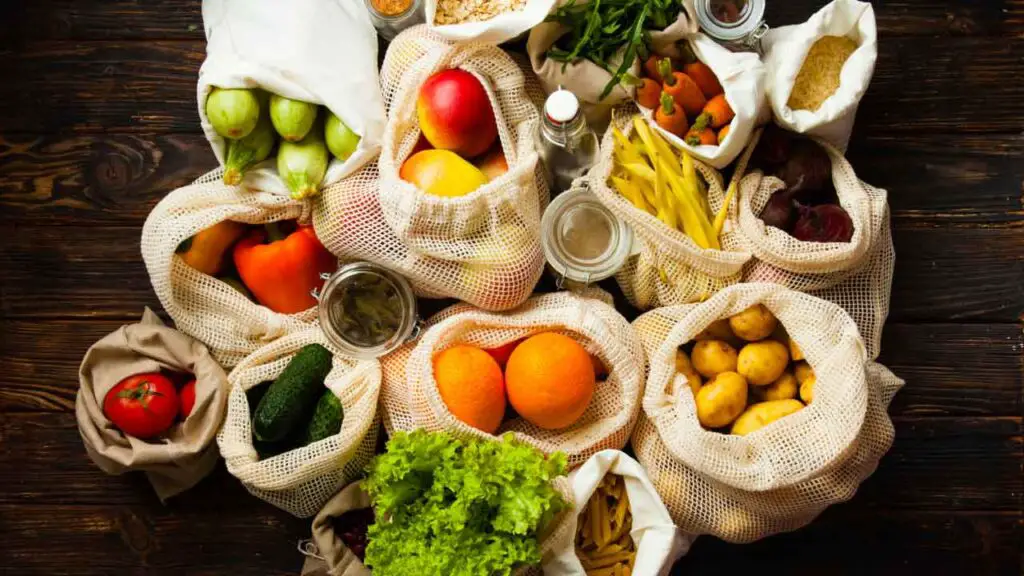
One of the questions we get asked is this: how to be more eco-friendly when shopping? As long as you observe the following tips, you’ll be surprised by how much positive environmental impact you can make.
- Always bring a reusable shopping bag with you. When you’re planning to go shopping, always carry multiple reusable shopping bags with you. This way, you won’t end up with multiple plastic bags to take home. Besides, these bags are stylish and easy to carry, so you can continue shopping in style.
- Buy a tumbler. One of the first things on your shopping list should be a reusable water bottle or tumbler. Single-use plastic water bottles are one of the biggest waste materials found in landfills, and you don’t want to add up to the numbers. That’s why we strongly recommend buying a reusable and refillable tumbler instead.
- Don’t buy items that are made from unsustainable products. These are products that use materials that are not easy to make or manufacture. As a result, it ends up using a lot of our natural resources during production, and that can take its toll on the environment eventually.
- When buying new items, it’s best to support companies that sell eco-friendly items. Most of today’s companies are aware of the environmental impact of their manufacturing processes, so they have shifted to eco-friendly means. So as much as possible, look for brands that are audited and certified as eco-friendly.
- It’s best to invest in products that are most likely to stay for a long time. Cheap items may seem like a good deal, but you may have to replace them more often. Instead, invest in well-built products that will surely last for a long time.
- Go to thrift stores. If you’re looking for a wardrobe update, thrift stores can be your new shopping destination. You’ll be surprised by the pieces you’ll find in these stores – all of them still highly wearable. Thrift stores also sell affordable clothes, so you don’t have to break the bank to go on a shopping spree.
- Support your local flea markets and garage sales. There’s a popular saying telling us that one man’s trash is another man’s treasure – and you can find these treasures in flea markets and garage sales. Conversely, you can also host a garage sale for items you no longer use instead of throwing them away.
- Only buy what you need. While it’s tempting to buy items that are on sale, ask yourself first if you need them. If you won’t be able to use an item completely, it will only end up in the dumpster. Besides, this will help you spend your money on more important matters.
Educate Yourself and Others
- Out of the 150 easy ways to be more eco-friendly, this is perhaps the most important tip. Always look for ways to improve what you know about the sustainable eco-friendly lifestyle. If you can, also share the word about these eco-friendly practices with your friends. This is a great way to spread the eco-friendly lifestyle – and the more we practice it, the better things will be for the environment.
With these 150 easy ways to be more eco-friendly, we hope to help you live a life that’s more in tune with saving the environment. You don’t have to observe them all at once – start with the easiest ones and work your way from there. And that’s it – you now know how to be more eco-friendly.

